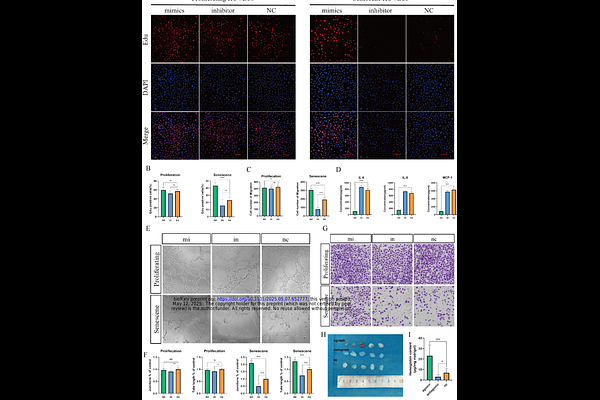miR-486-3p ameliorates aging-related impaired angiogenesis in adult moyamoya disease by targeting Forkhead Box O4

miR-486-3p ameliorates aging-related impaired angiogenesis in adult moyamoya disease by targeting Forkhead Box O4
Chen, J.; Wen, Y.; Chen, S.; Long, T.; Chen, F.; Wang, Z.; Zhang, G.-Z.; Li, M.; Zhang, S.; Kang, H.; Feng, W.; Wang, G.
AbstractObjective: Investigate miR-486-3p\'s role in alleviating age-related angiogenic decline in Moyamoya disease (MMD) by regulating senescent endothelial cells. Methods: Clinical analysis of 151 MMD patients correlated age with postoperative angiogenesis (DSA grading). Senescent HUVECs (SA-{beta}-gal>80%) exhibited elevated SASP factors (IL-6/IL-8/MCP-1). Functional assays (EdU/Transwell/Matrigel) and bioinformatics identified miR-486-3p targets, validated via luciferase/Western blot. Results: Patients [≥]35 years had 3.67-fold higher risk of poor angiogenesis (OR=3.67). Senescent HUVECs showed 10-16-fold higher SASP secretion (p<0.01). miR-486-3p overexpression increased proliferation (EdU+25%), migration (1.7-fold), and tube formation (+40% branches) in senescent cells (p<0.01) and enhanced angiogenesis in vivo (p<0.001). miR-486-3p directly targeted FOXO4, reducing its luciferase activity (-35%) and protein levels (-37%) (p<0.01), suppressing SASP. Conclusion: miR-486-3p enhances post-revascularization angiogenesis in MMD by inhibiting FOXO4-mediated SASP, offering a therapeutic target and predictive biomarker.